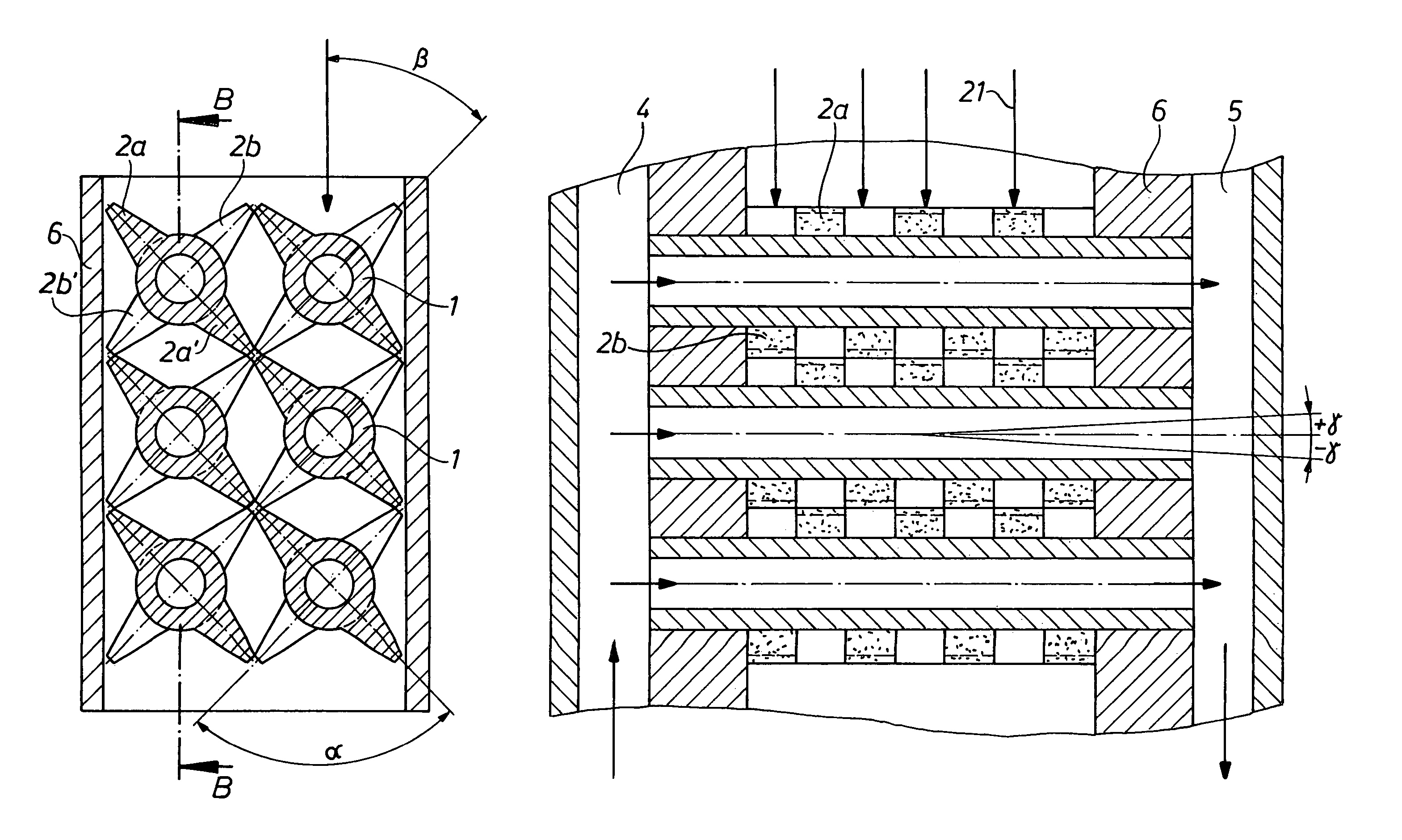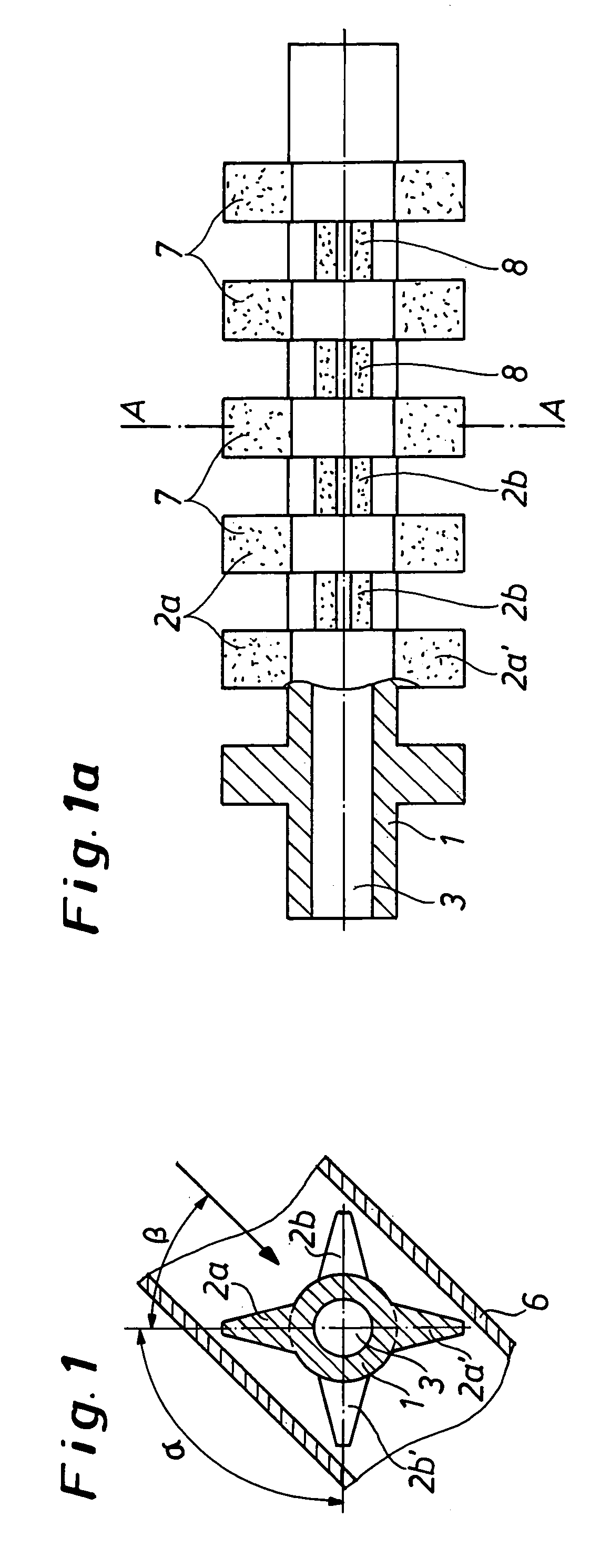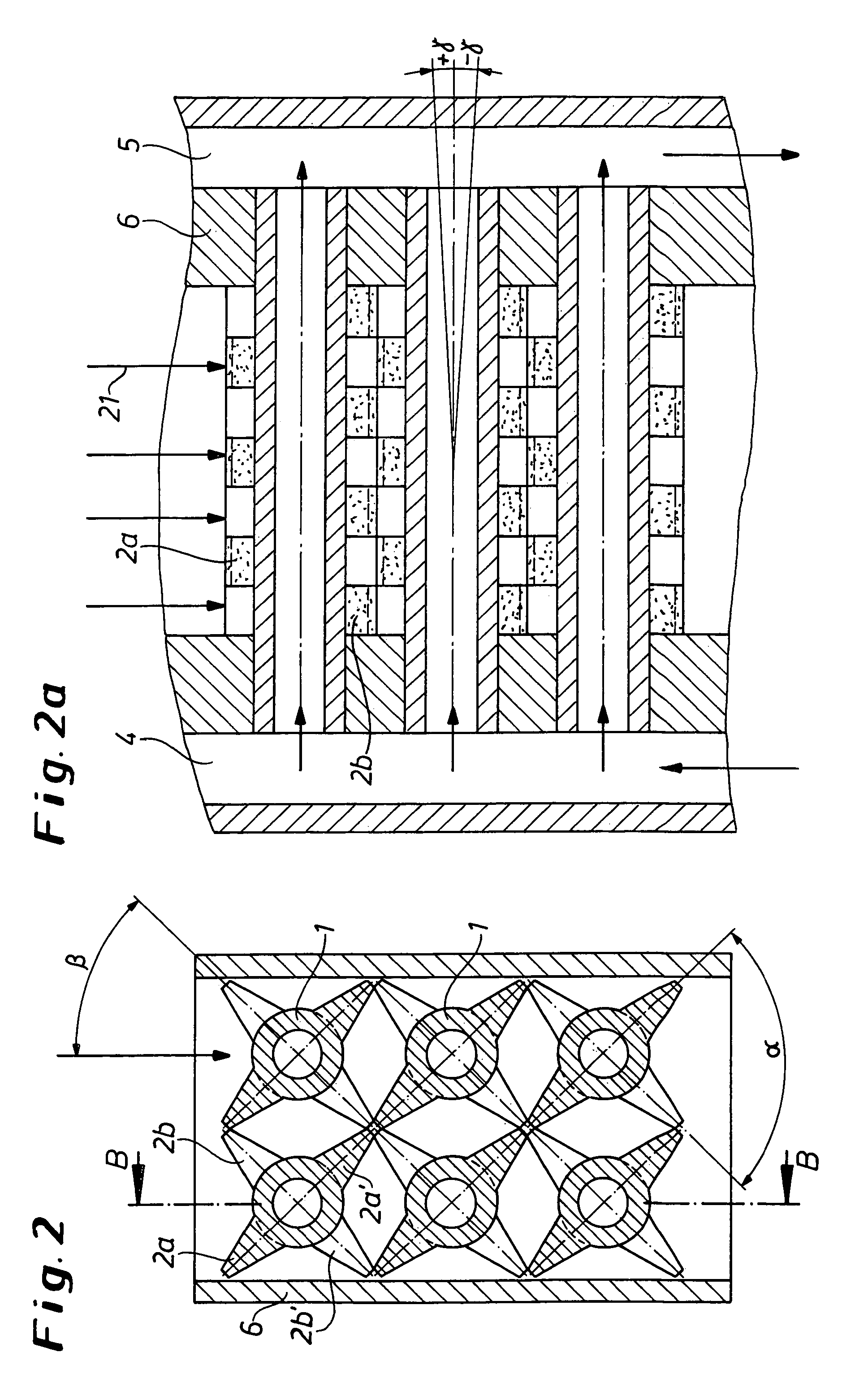Mixer/heat exchanger
a heat exchanger and mixer technology, applied in indirect heat exchangers, lighting and heating apparatuses, transportation and packaging, etc., can solve the problems of insufficient achievement, long residence time, high pressure loss, etc., and achieve stable design, large heat-transfer surface area, and stable design
- Summary
- Abstract
- Description
- Claims
- Application Information
AI Technical Summary
Benefits of technology
Problems solved by technology
Method used
Image
Examples
example 1
[0092]FIG. 1 shows a single-piece tube 1 in a housing 6 through which product flows, which tube, on the outer circumference, has a finned region and two radial mixing fins 2a, 2a′, which are at an angle β+45 or −135° with respect to the main direction of flow (arrow) in a front finned region, illustrated in section, and a rear finned region with two further fins 2b, 2b′. The width of the finned region is in this case selected in such a way that two fin layers each having two fins 2a, 2a′ and 2b, 2b′ are arranged alternately along the tube axis, radially offset with respect to one another, in the housing 6, and adjoin one another without any gaps in terms of their axial extent (cf. FIG. 1a).
[0093]The shape or configuration of the fins and the surface condition of the fins may differ. The surface of the fins and of the tube may, for example, be structured by elevated bosses, studs or flutes or grooves, in order to increase the heat-transfer surface area and to produce additional flow ...
example 2
[0103]A further mixer / heat exchanger is represented in longitudinal section in FIG. 2. Six tubes 1 have two parallel layers of fins 2a and 2b, each having two radially offset fins 2a, 2a′ on the outer circumference of the tubes. One end of the tubes 1 opens into a heat-transfer medium supply chamber 4, and the other to a heat-transfer medium discharge chamber 5 (FIG. 2a). The tubes 1 are welded to the supply chamber 4 and the discharge chamber 5. The tubes 1 are at an angle γ of approximately 5° transversely with respect to the main direction of flow 21 of the product. The tubes 1 with the fins are positioned in such a way that the fins are positioned at an angle β of 45° with respect to the incoming product flow 21. The fins 2a are at an angle α of 90° with respect to the offset fins 2b.
[0104]The supply chamber 4 and discharge chamber 5 of the temperature-control agent comprise a pocket or half-tube (not shown) welded to the housing 6.
example 3
[0105]FIG. 10 shows a mixer / heat exchanger unit, having a rectangular housing 6 and three finned tubes 1, 1′, 1″. In terms of their structural shape, the fins 12a, 12b correspond to the types shown in FIG. 3, and they are arranged in alternating layers over the length of the tubes 1, 1′, 1″.
[0106]In the cross section shown in FIG. 11 on line IV—IV from FIG. 10, it can be seen that two chambers 4, 5, which are connected to a feedline 16 and a discharge line 17 for a liquid heat-transfer medium (cf. FIG. 12), are formed by an outer casing 15. As shown in FIG. 11, in operation the heat-transfer medium 18 flows through the tubes 1, 1′, 1″. At their one end the tubes 1, 1′, 1″ have a constriction 3′ in the passage 3.
[0107]The mixer / heat exchanger (cf. sectional illustration in FIG. 12) has a rectangular product-flow region formed by the housing 6. The further housing 15, which surrounds the housing 6 and is divided by partition fins, forms the chambers 4, 5 for the heat-transfer medium 1...
PUM
| Property | Measurement | Unit |
|---|---|---|
| angle | aaaaa | aaaaa |
| angle | aaaaa | aaaaa |
| en angle | aaaaa | aaaaa |
Abstract
Description
Claims
Application Information
 Login to View More
Login to View More - R&D
- Intellectual Property
- Life Sciences
- Materials
- Tech Scout
- Unparalleled Data Quality
- Higher Quality Content
- 60% Fewer Hallucinations
Browse by: Latest US Patents, China's latest patents, Technical Efficacy Thesaurus, Application Domain, Technology Topic, Popular Technical Reports.
© 2025 PatSnap. All rights reserved.Legal|Privacy policy|Modern Slavery Act Transparency Statement|Sitemap|About US| Contact US: help@patsnap.com



